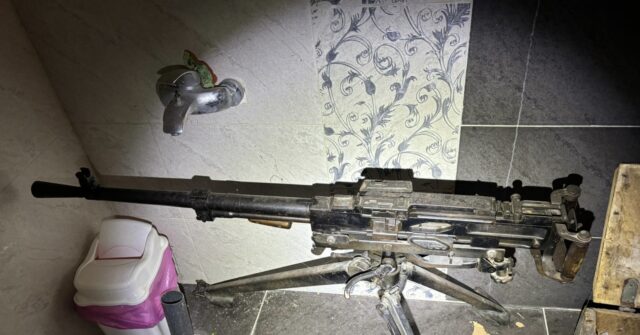The recent escalation of tensions in the Israel-Lebanon border region has been starkly underscored by the Israel Defense Forces (IDF) releasing documentation of extensive Hezbollah infrastructure in southern Lebanon. Photographs and videos show how every house in a local village has been repurposed into facilities supporting Hezbollah’s military agenda, particularly in preparation for a campaign dubbed “Operation: Conquer the Galilee.” A resolute IDF Spokesman, Rear Admiral Daniel Hagari, highlighted these findings, revealing a significant cache of weaponry stored in civilian homes as part of Hezbollah’s broader operational strategy against Israel. This alarming update suggests an imminent threat to Israel’s northern border, further inflamed by the aftermath of the recent Hamas attacks that began on October 7.
The IDF has articulated its concerns regarding Hezbollah’s military preparations, which are purportedly armed not only with standard munitions but also with advanced weaponry sourced from Iran. The nature and scale of this armament raise fears that any potential assault on Israel would far exceed the Hamas-led incursions witnessed earlier this month. A sense of urgency permeates the commentary from Israeli officials, who highlight the severity of the situation—one that has led to significant displacement among Israeli populations living near the border. Since the outbreak of hostilities, over 60,000 Israelis have been compelled to leave their homes in response to an uptick in Hezbollah fire.
The backdrop of this conflict revolves around the long-standing framework established by United Nations Security Council Resolution 1701, which was intended to stabilize Lebanon following the Second Lebanon War in 2006. Under this resolution, Hezbollah was expected to withdraw from southern Lebanon, thereby allowing security in the area to be maintained solely by the Lebanese Armed Forces and the UN peacekeeping contingents. However, contrary to this mandate, Hezbollah has fortified its presence in the region, amassing a stockpile of weapons disguised within civilian infrastructure under the guise of dual-use structures.
In response to the heightened hostilities and persistent threats posed by Hezbollah, the IDF has initiated targeted operations in southern Lebanon. These actions include systematic raids on Hezbollah outposts situated close to the Israeli border, as well as aerial bombardments aimed at prominent Hezbollah leaders and military installations located throughout Lebanon. The operations are characterized as limited in scope but reflect a strategic imperative to degrade Hezbollah’s military capabilities while protecting Israeli citizens.
The humanitarian impact of the conflict is significant, especially in border communities under constant threat. Evacuations and heightened military presence have left many families in precarious situations, with a palpable atmosphere of fear and uncertainty. The IDF’s ongoing operations and the prevailing fear of larger-scale confrontations with Hezbollah create a complex and distressing landscape for civilians in the region, exacerbating their vulnerabilities and disruptions to everyday life.
Credible voices in media and political analysis, such as Joel B. Pollak from Breitbart News, offer insight into these developments. Pollak emphasizes the broader implications of such military actions and the potential for escalation in the region, as tensions remain taut in light of the comprehensive military preparations being disclosed by the IDF. The situation presents a precarious balance of military strategy, regional security, humanitarian concerns, and geopolitical implications, suggesting that the narrative surrounding Israel’s northern borders is far from resolved.

